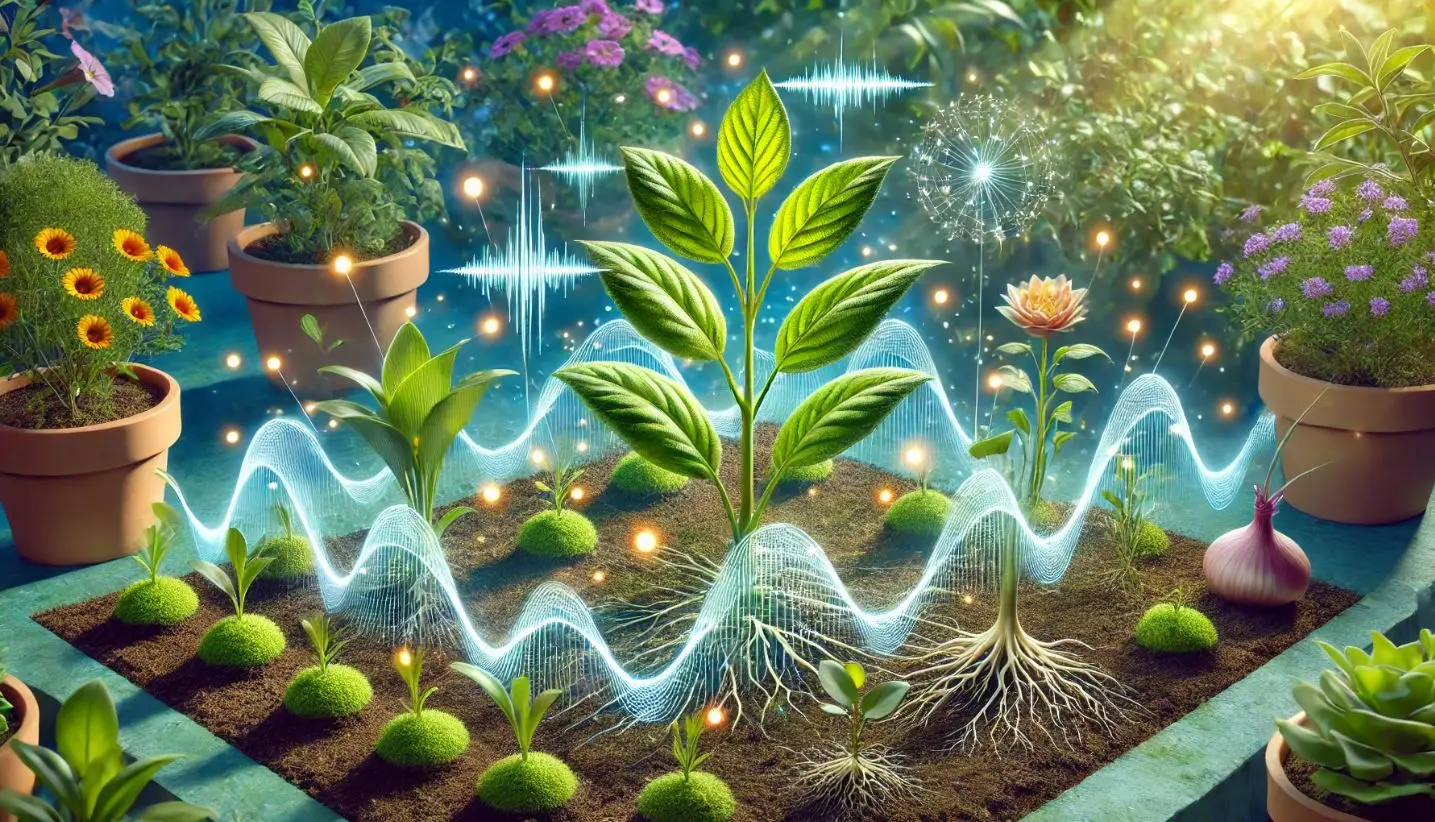Welcome to the fascinating world where music and nature converge! Have you ever wondered how the sounds of classical music or the chirping of birds might affect plant growth? The idea that plants thrive on music is not just a myth; it’s backed by intriguing research and experiments. Let’s explore how these harmonious sounds can help your plants flourish.

The Power of Sound Vibrations
Plants are remarkably sensitive to their environment, responding to light, temperature, and even sound. Sound vibrations, particularly at certain frequencies, can significantly enhance plant growth. Here’s how:
- Enhanced Nutrient Absorption: Sound waves create microscopic vibrations in plant cells, potentially increasing nutrient absorption efficiency from the soil.
- Increased Photosynthesis: Certain sound frequencies can stimulate stomata (tiny leaf openings) to open wider, facilitating better gas exchange, which is essential for photosynthesis.
- Stimulated Growth Hormones: Sound vibrations can trigger the production of growth hormones like auxins, which are vital for cell elongation and division.
Classical Music and Plant Response
Classical music, with its varied frequencies and harmonious melodies, provides a beneficial range of vibrations for plants. This effect is akin to the soothing sounds of nature, which can be mimicked by playing specific classical pieces known for their rhythmic consistency and soothing tones.
Birds Chirping and Stomata Opening
Imagine a serene morning with birds chirping—a natural symphony that signals the start of a new day. This natural soundscape can also benefit plants by prompting their stomata to open, enhancing their breathing process.
Stomata and Gas Exchange
Stomata are tiny pores on leaf surfaces that play a crucial role in gas exchange. They allow carbon dioxide to enter for photosynthesis and release oxygen and water vapour.

- Sound and Stomata: The specific frequencies of birdsong (usually 1-5 kHz) can stimulate the guard cells around the stomata to open, improving gas exchange.
- Mimicking with Music: Playing classical music with similar frequencies can replicate this effect, promoting better gas exchange and overall plant health.
Experiments on Music and Plant Growth
Several experiments have demonstrated the positive impact of music on plant growth:
Dorothy Retallack’s Experiment (1973)
Dorothy Retallack’s studies at the Colorado Woman’s College revealed fascinating insights:
- Classical Music: Plants exposed to classical music thrived, showing robust growth and lush leaves.
- Rock Music: Plants subjected to rock music exhibited stunted growth and leaned away from the speakers.
- Country Music: Plants exposed to country music grew well but less vibrantly than those with classical music.
Dr. T. C. Singh’s Research
Dr. T. C. Singh’s extensive research in India found that:
- Enhanced Growth Rates: Plants exposed to classical music grew significantly faster and larger.
- Increased Biomass: Noticeable increases in plant biomass were observed.
South Korean Rice Study (2007)
A study by the National Institute of Agricultural Biotechnology in South Korea on rice plants found:
- Gene Expression: Music triggered specific gene expressions related to growth.
- Increased Yield: Rice plants exposed to music yielded more compared to the control group.
Practical Applications
Harness the benefits of sound for plant growth with these practical steps:
- Choose Appropriate Music: Select classical pieces with frequencies within the 1-5 kHz range.
- Regular Exposure: Play the music regularly, especially in the early morning, to mimic the natural sound environment.
- Monitor Plant Response: Observe for signs of improved growth, such as increased leaf size, vibrant colour, and overall health.
Example of Music Pieces
Consider these classical music pieces for your plants:
- Beethoven’s Symphony No. 6 (Pastoral Symphony): Gentle and harmonious melodies resembling natural sounds.
- Vivaldi’s Four Seasons: Particularly “Spring,” known for its uplifting and consistent rhythms.
- Mozart’s Piano Sonatas: Structured yet varied frequencies that can stimulate plant responses.
Effects of Different Music on Plant Growth
| Type of Music | Effect on Plant Growth | Growth Improvement Percentage |
| Classical Music | Thrives, robust growth, lush leaves | 60% |
| Rock Music | Stunted growth, plants leaned away from speakers | -20% |
| Country Music | Good growth, less vibrant than classical | 40% |
| No Music (Control) | Standard growth, no significant enhancement or detriment | 0% |
Try It Yourself: A Simple Experiment

Materials Needed
- 4 identical potted plants
- Classical music source (e.g., a CD player, a smartphone with speakers)
- Rock music source
- Quiet area for the control group
- Watering can and fertiliser
Method
- Setup: Place the plants in four different areas:
- One in a room where classical music will be played.
- One in a room where rock music will be played.
- One in a room with no music (control group).
- One in a room where country music will be played.
- Music Exposure: Play the respective music for each plant for 2 hours daily, preferably during the early morning or evening.
- Consistent Care: Ensure all plants receive the same amount of water, light, and fertiliser.
- Observation: Observe and record each plant’s growth over four weeks. Measure parameters such as height, number of leaves, and overall health.
- Analysis: Compare each plant’s growth results. Note any significant differences in size, colour, and health.
In Conclusion
Playing classical music to plants can significantly enhance their growth by improving nutrient absorption, photosynthesis, and hormone production. By mimicking the natural soundscape of birds chirping, these harmonious sounds encourage stomata opening and better gas exchange. Try it yourself and witness the symphony of growth in your own plants!
Download this article